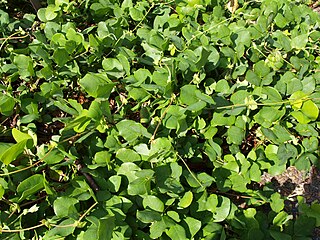
New South Wales is a state on the east coast of Australia. It borders Queensland to the north, Victoria to the south, and South Australia to the west. Its coast borders the Tasman Sea to the east. The Australian Capital Territory is an enclave within the state. New South Wales' state capital is Sydney, which is also Australia's most populous city. In September 2018, the population of New South Wales was over 8 million, making it Australia's most populous state. Just under two-thirds of the state's population, 5.1 million, live in the Greater Sydney area. Inhabitants of New South Wales are referred to as New South Welshmen.

The Government of New South Wales, also referred to as the New South Wales Government or NSW Government, is the Australian state democratic administrative authority of New South Wales. It is currently held by a coalition of the Liberal Party and the National Party. The Government of New South Wales, a parliamentary constitutional monarchy, was formed in 1856 as prescribed in its Constitution, as amended from time to time. Since the Federation of Australia in 1901, New South Wales has been a state of the Commonwealth of Australia, and the Constitution of Australia regulates its relationship with the Commonwealth. Under the Australian Constitution, New South Wales ceded legislative and judicial supremacy to the Commonwealth, but retained powers in all matters not in conflict with the Commonwealth.

The Sydney central business district is the main commercial centre of Sydney, the state capital of New South Wales and the most populous city in Australia. It extends southwards for about 3 km (2 mi) from Sydney Cove, the point of first European settlement in which the Sydney region was initially established. Due to its pivotal role in Australia's early history, it is one of the oldest established areas in the country.

Arabis, or rockcress, is a genus of flowering plants, within the family Brassicaceae, subfamily Brassicoideae.

The states and territories are the first-level administrative divisions of the Commonwealth of Australia. They are the second level of government in Australia, located between the federal and local government tiers.

Augusta Kennedia, Kennedia macrophylla, is a leguminous plant native to Western Australia. It is now rare and endangered. It is also used as an ornamental plant.

Kennedia is a genus of plants comprising 16 species, all native to Australia. They are evergreen climbing plants with woody stems. They usually have trifoliate leaves and pea-type flowers of various colours from pink to dark red and yellow to black. The genus was named by Étienne Pierre Ventenat after John Kennedy, a partner in the renowned firm of nurserymen, Lee and Kennedy of Hammersmith, London.

Echinolaena is a genus of plants in tribe Paspaleae of the grass family, native to the New World tropics. It includes only two species after the referral of former members to the related genera Hildaea, Ichnanthus, Oedochloa and the more distant Chasechloa in a 2015 revision.

Kennedia nigricans is a species of flowering plant in the family Fabaceae, endemic to the south-west of Western Australia.

Kennedia coccinea is a species of flowering plant in the family Fabaceae, endemic to the south-west of Western Australia. It is a low growing trailing shrub or climber which has twining rust-coloured branchlets with rounded leaflets that are about 1.5 cm long and occur in threes. Orange red or scarlet pea flowers are produced in clusters between August and November in its native range.

Coral vine is a common name shared by two plants:

Kennedia prostrata, commonly known as running postman or scarlet runner or scarlet coral pea, is a species of flowering plant in the family Fabaceae, endemic to Australia.

Kennedia rubicunda, commonly known as the dusky coral pea, is a species of flowering plant in the family Fabaceae, endemic to Australia. It occurs in the states of Victoria and New South Wales and Queensland.

Cryptoptila immersana, the four eyes or ivy leafroller, is a moth of the family Tortricidae. It is found in Queensland, New South Wales and Tasmania.

Porphyrosela aglaozona is a moth of the family Gracillariidae. It is known in Australia in the states of New South Wales, Queensland and Victoria and on Fiji.
Porphyrosela dismochrysa is a moth of the family Gracillariidae. It is known from the Australian states of New South Wales and South Australia.

Arabis procurrens, the spreading rock cress, is a species of flowering plant in the family Brassicaceae. It is a spreading evergreen or semi-evergreen perennial, forming a dense mat of foliage, with loose racemes of white flowers in spring, suitable for cultivation in the alpine garden.

Kennedia retrorsa is a species of vine in the family Fabaceae found only in the Mount Dangar area and the adjacent Goulburn River catchment in New South Wales. It flowers from September to December producing pink, purple, or scarlet flowers.

Kennedia lateritia is a species of flowering plant in the family Fabaceae, endemic to the south-west of Western Australia.
















